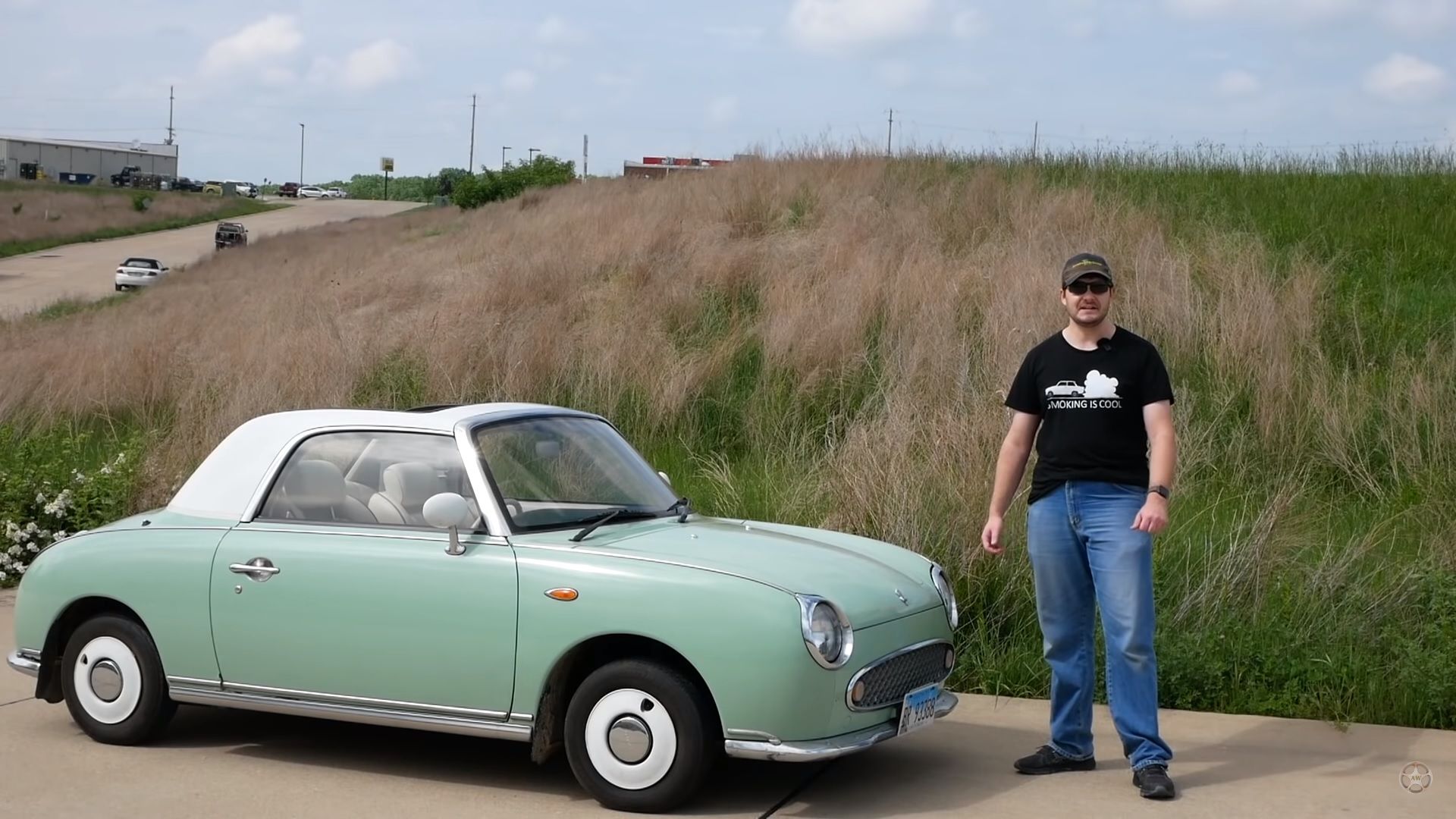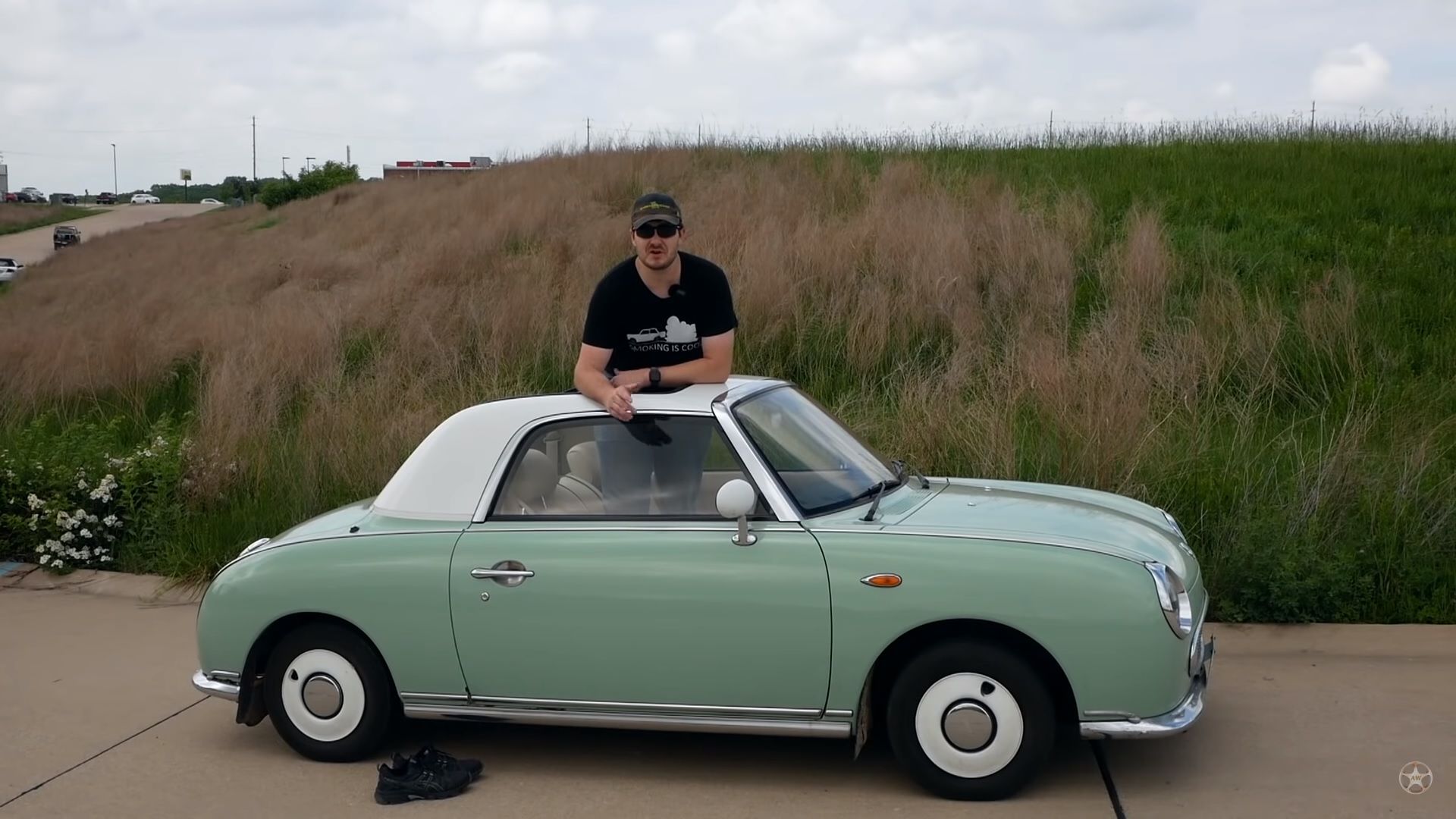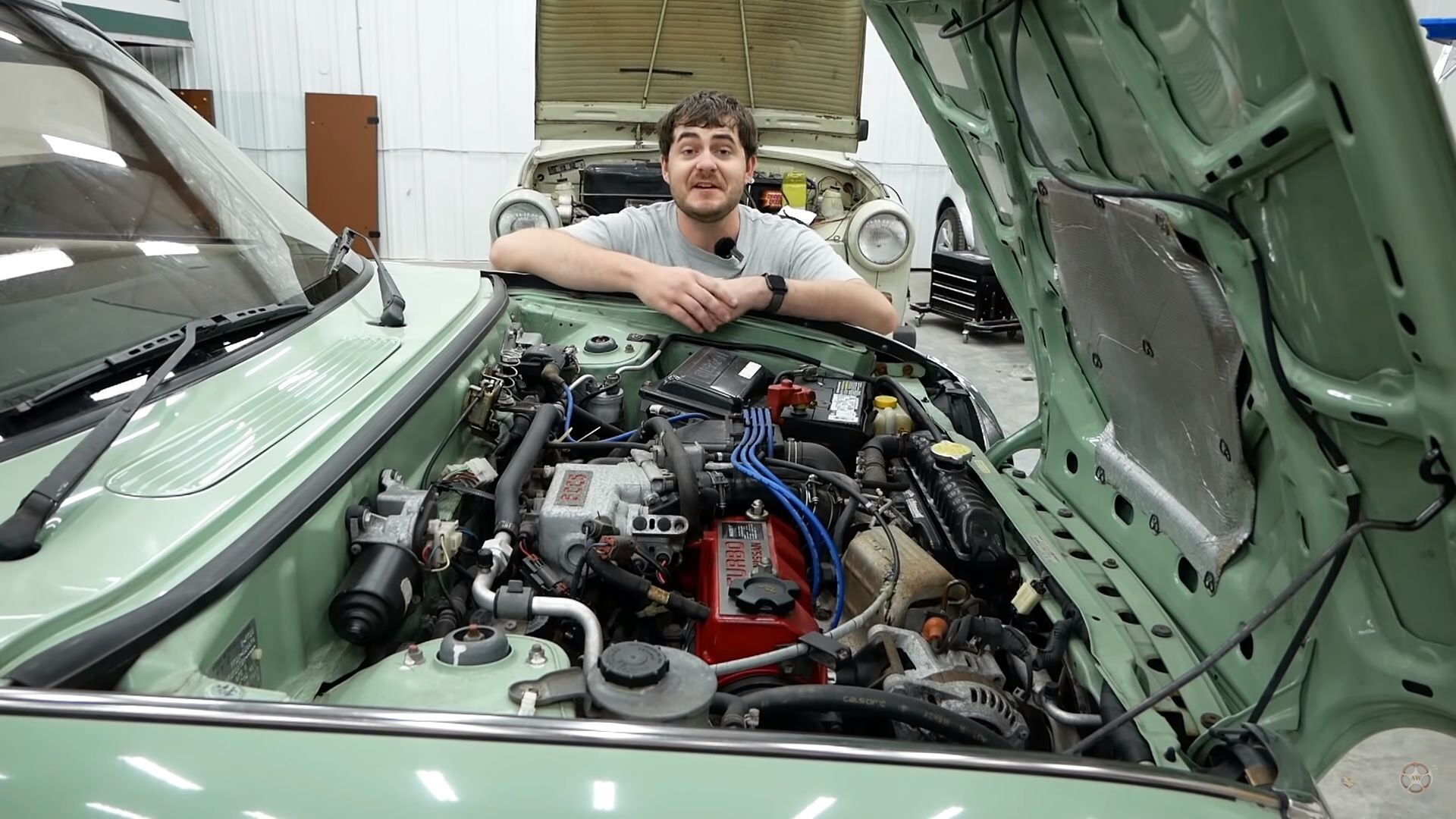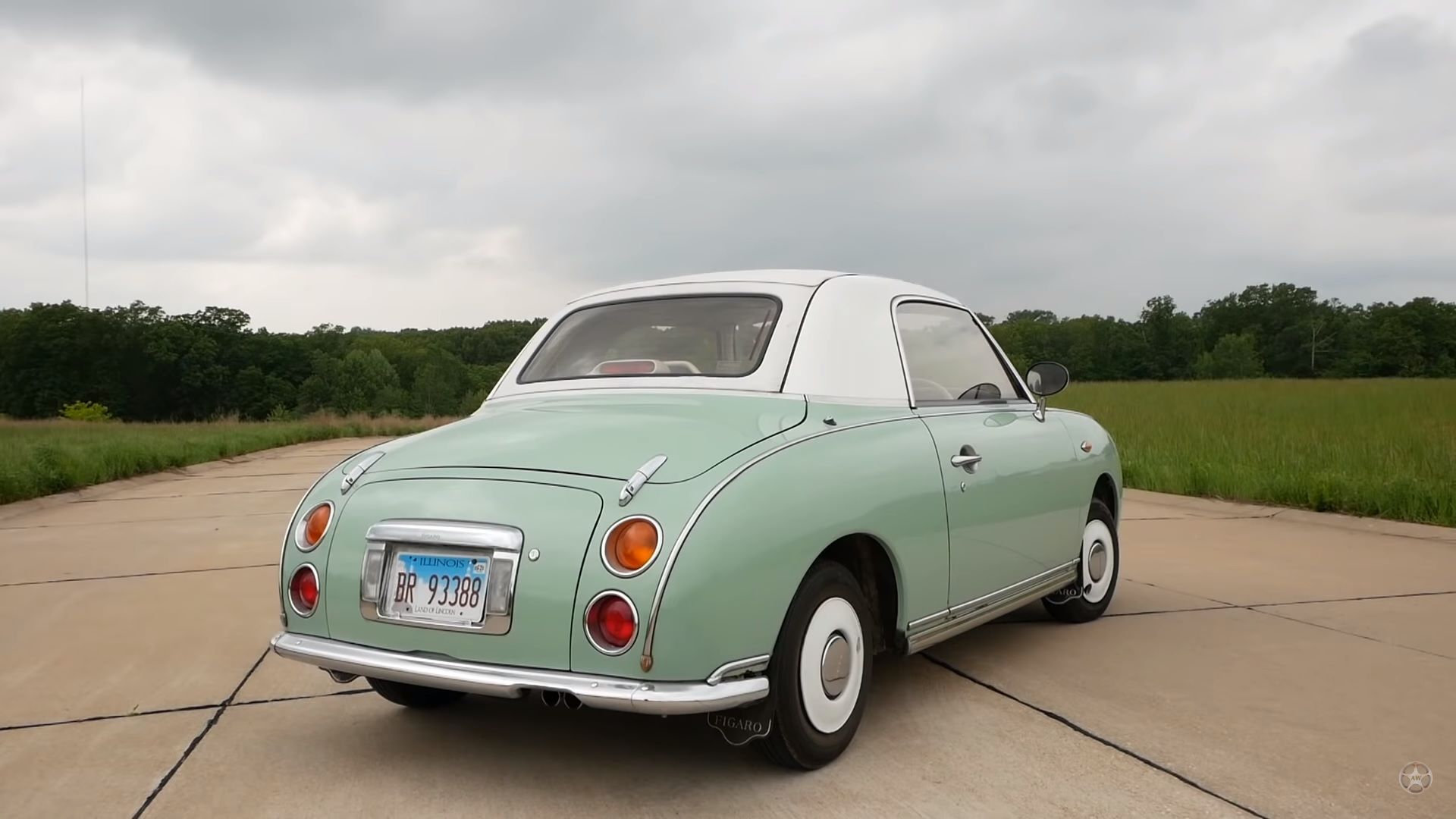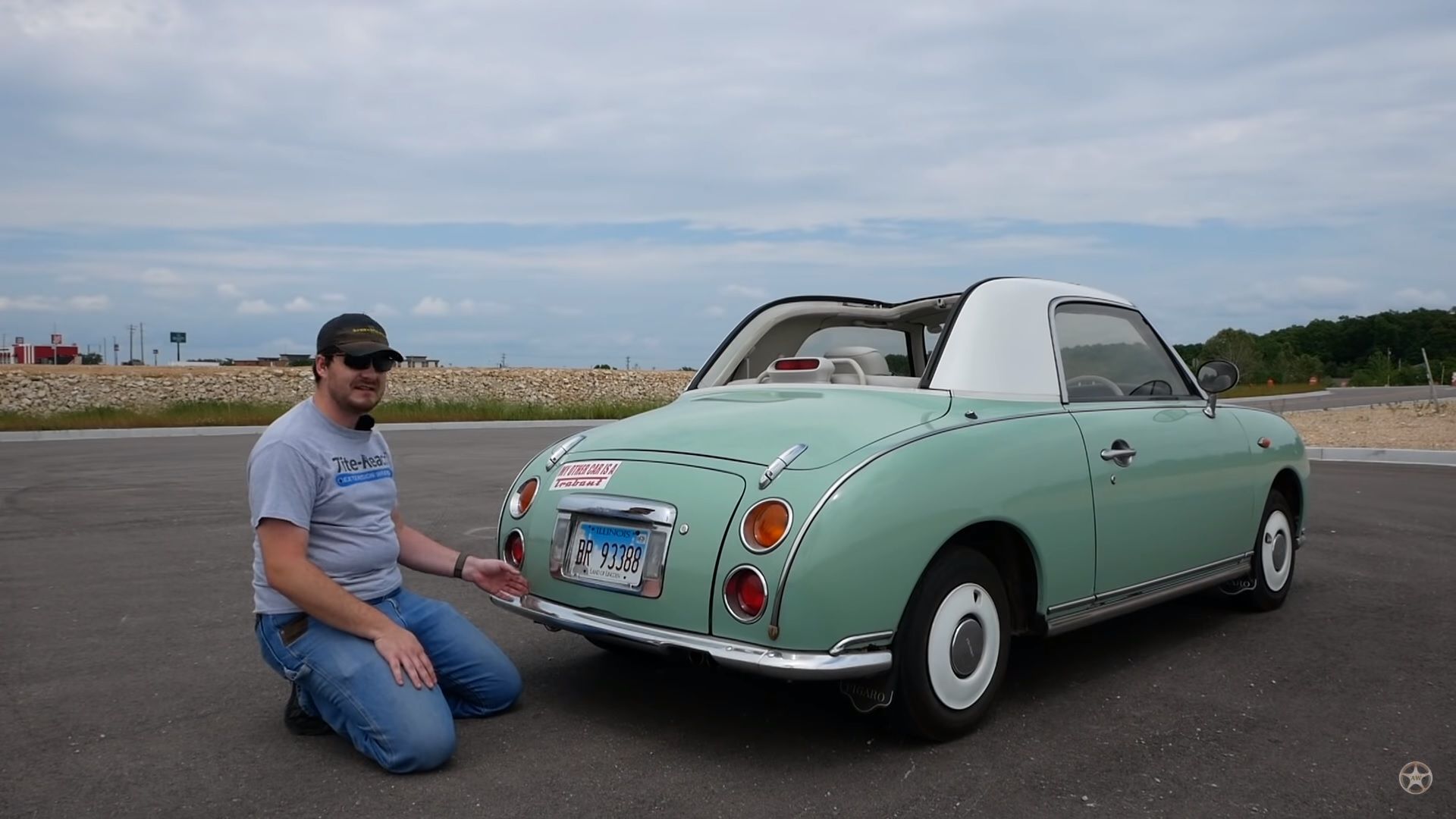When it comes to Japanese Kei cars, they can be split into three types: boxy, cute, and downright weird. Deciding which is which obviously depends on personal taste, but the Nissan Figaro is definitely of the cute variety. On top of looking like its made from candy thanks to its vintage color palette, the Figaro also looks as if it was designed in the 1960s. And I say "looks" because the Figaro was actually produced in 1991.
A fashion statement dressed as a kei car
Featured in the latest episode of Aging Wheels, the Figaro was one of four cars that were created by Nissan's Pike Factory with the specific goal to break away from the conservative designs produced in the late 1980s and 1990s.
The Figaro has a foldable top, but it's not a full-fledged convertible. Similar to the modern Fiat 500C, only the central part of the roof is foldable under the deck lid, leaving the B-pillars and areas above the side windows in place. The top folds under the big lid in the back that appears to be a trunk as well, but that's not where you store luggage. Bags go in the smaller lid between the taillights. It's not very practical, but there's a decent amount of room in there. The interior is equally vintage, with lively colored upholstery, rounds clocks in the dash, and loads of switches instead of the buttons that were already popular in the early 1990s.
Powered comes from a tiny 1.0-liter four-cylinder engine borrowed from the Micra. However, unlike the other cars from the Pike Factory, this one's turbocharged. Rated at 75 horsepower and 78 pound-feet of torque, it's powerful enough to make the 1,800-pound Figaro quicker than most Kei cars and capable of a top speed of 106 mph.
Nissan Figaro specifications
|
Engine |
1.0-liter four-cylinder turbocharged |
|---|---|
|
Horsepower |
75 HP |
|
Torque |
78 LB-FT |
|
Top Speed |
106 mph |
Nissan originally planned to build only 8,000 Figaros, but demand was so high that the Japanese decided to make an additional 12,000 examples. But 20,000 units weren't enough, so many buyers had to enter a lottery to purchase a Figaro.
The Nissan Figaro is one of four Pike Factory cars
Back in 1980s, Nissan established the Pike Factory and commissioned a design team to create an innovative vehicle that would break away from the conservative designs produced at the time. They came up with the Be-1, a tiny hatchback with a rounder design that went against the boxier vehicles of the 1980s. The Be-1 went into production in 1987 with a 1.0-liter four-banger rated at 51 horsepower and 55 pound-feet. Nissan built 10,000 units until 1988, and customers were decided through a lottery due to high demand.
The second car was called the Pao and was also a small hatchback. A bit boxier than the Be-1, but with a decidedly more vintage look, it arrived in 1989 and remained in production until 1991. It featured the same engine as the Be-1. Transmission choices included a three-speed automatic and a five-speed manual. Production capped at 51,657 units, far more than other Pike Factory cars.
Also, in 1989, Nissan introduced the S-Cargo. A tiny van seemingly inspired by the Citroen 2CV Fourgonnette from the 1950s, the S-Cargo was powered by a different engine, in the form of a 1.5-liter four-cylinder shared with the Nissan sunny and rated at 74 horsepower. Its name stands for "small cargo," but it also sounds like "escargot," the French word for "snail." And needless to say, the S-Cargo looks like a snail thanks to the oval shape of its windshield and front upper roof section, as well as the headlamps positioned away from the fascia. The S-Cargo was produced from 1989 to 1992 in around 8,000 units and wasn't as popular as the other Pike Factory cars.

